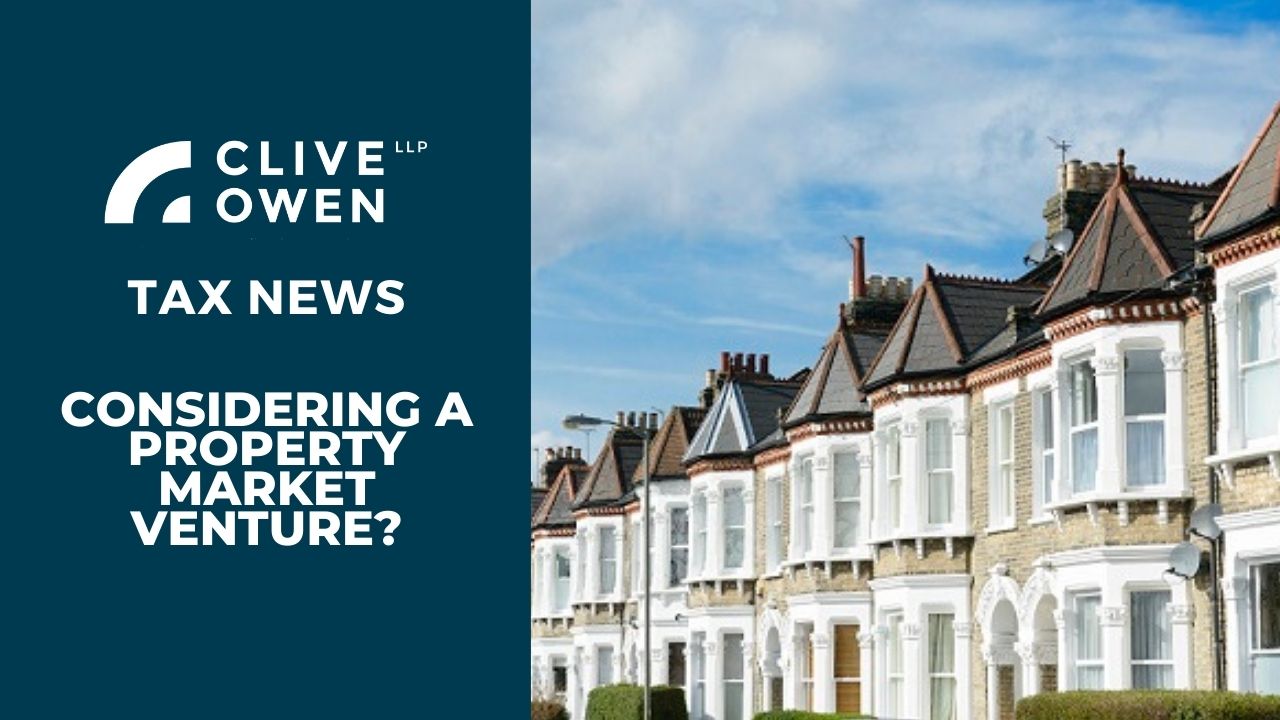
Date posted: 7th Dec 2020
Is it an investment or are you trading?
We have many clients who see the value of starting a property venture.
Many see significant monies to be made by buying a property in a run down or dilapidated state, renovating it, and selling it for a profit. However, when it comes to tax, it is important to know whether the ‘profit’ element is a capital gain or a trading profit. This will determine the tax that applies i.e. capital gains tax or income tax and the appropriate tax rates (and reliefs) that apply.
Trading v investment
The tax consequences will depend on whether the property is viewed as an investment or a trade. The question to answer is therefore whether you are a property developer or a property investor.
In answering the question, you need to consider the intention when you bought the property. If the aim was to buy the property, do it up and then let it out, the property will likely to be deemed as an investment property and therefore any ‘profit’ would likely fall under the lower (currently) capital gains tax regime.
However, if your original intention was to buy, renovate and sell at a profit, HMRC may state that you are trading and look to charge both income tax and national insurance on the ‘profit’.
Nevertheless, the position is not cut and dry. An intention to sell at a profit at some point in the future does not automatically mean you are trading. Also plans change, and a property purchased as a long-term investment might be sold after a relatively short period of time as a result of a change in personal circumstances.
Badges of trade
There are concepts known as ‘badges of trade’ which have developed from case law and can provide some guidance to determine whether an activity is a trade or an investment. The badges consider issues such as the length of ownership, the frequency of transactions, reasons for selling, original motive, sourcing of finance etc.
It will be necessary to consider these, in arriving at a conclusion when preparing to declare the sale for tax purposes.
A hidden tax charge?
You also need to watch for a hidden tax charge if you change your mind. For instance, a property entrepreneur may decide to build (and subsequently) sell a block of flats. However, upon completion if he makes a decision to keep the properties for the rental yield, he could be charged tax on the deemed profit of changing the status of the properties from stock to an investment asset. Whilst it seems odd that he would face a tax charge, despite not selling the properties (and not having any cash from a sale), this position is often something that property entrepreneurs face.
How to own the property?
If you own the property personally and wish to reinvest in future developments, then you may only have 53% of the profits left to reinvest, after the tax and national insurance liabilities have been considered.
If you are looking at multiple investments then consideration should be given to owning the property via a company. Currently, corporate tax has a flat rate of 19% regardless of whether the property was bought as an investment or to renovate and sell. Due to the low tax rate, this means that any profits can be reinvested within the corporate entity with a 81% profit retention, so this could be a significant advantage, where you are looking at future projects.
It is important that the “tax tail does not wag the dog” and you should seek advice from a tax professional regarding the other advantages and disadvantages of individual and corporate ownership.
Reporting
Finally, it is important to remember if the property is owned outside of a company and you believe that you are entitled to capital gains tax treatment, the property disposal must be reported to HMRC within 30 days of sale on a stand-alone capital gains tax return. The gain may also be reporting on your tax return, if you complete one.
If the profit is derived from trading, then you would need to report this on your annual tax return.
If you have any queries in relation to property tax planning, please call our tax team here.
Read more below:


